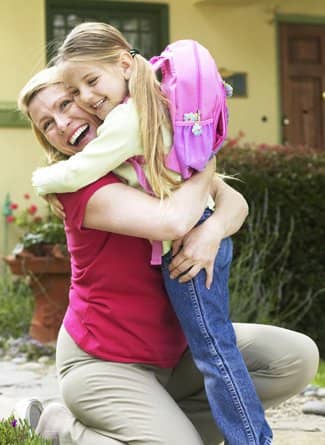How Grandparents Can Help Grandchildren Adjust To The Challenges Of Divorce
When parents decide to divorce, it doesn’t just affect them and their kids. It also impacts grandparents, even though they might not be the first people we think about. Just like how glue sticks things together, marriage binds people as one. But when divorce happens, it’s like pulling things apart, and it can really hurt. Grandparents witness this pain firsthand, often feeling at a loss for how to ease it. If you’re a grandparent navigating through this rocky terrain, then this article is tailor-made for you. We’re going to talk about how grandparents can help their grandkids during a divorce, making things a bit easier with some ideas and strategy.
Challenges Of Grandparents Raising Grandchildren
Many grandparents love playing with their grandkids without having to raise them full-time. But sometimes life throws a curveball and they end up being the main caregivers. This can be tough in a whole bunch of ways. Grandparents might not have as much freedom anymore and taking care of kids can be tiring and stressful. If something sad happened, like losing a child, they might be grieving while also helping their grandkids. On top of that, money can be tight, the kids might be acting up, and family fights can happen because of legal stuff or not getting enough help. But even though it’s hard, grandparents can feel really good knowing they’re giving their grandkids a safe and loving home.
Let’s Understand the emotional impact of divorce on Your grandchildren
Divorce can really hit your grandkids hard emotionally. As a grandparent, it’s important to understand how they’re feeling. Your grandkids might feel super sad, mad, scared, or guilty. It’s super important for you as grandparents to recognize and support these feelings instead of ignoring them.
Feeling sad and missing how things used to be is totally normal. Your grandkids might be mad at their parents for splitting up or frustrated because everything’s changing. They might feel scared and unsure about where they’ll live or how things will be with their parents in the future.
Sometimes your grandkids might even blame themselves for their parents’ breakup. It’s really important to let them know that it’s not their fault and that they’re still loved by both parents and the whole family.
Communication strategies that help your grandchildren open up about their feelings
Effective communication is key to helping your grandchildren navigate the challenges of divorce. As a grandparent, you can use a few tricks to make them feel comfy sharing what’s on their minds.
First up, let’s talk about active listening. When they’re pouring out their feelings, you gotta really listen up. That means giving them your full attention, looking them in the eye, and not jumping in with advice. Just being there and listening helps them feel safe to open up.
Next, You can ask questions that get them talking. Instead of yes-or-no questions, You can ask ones that make them think and talk more, like “How are you feeling about all the changes with the family?” or “What’s been the hardest part for you?”
When they do open up, it’s important to let your grandkids know you hear them. Saying things like “I understand this must be tough” or “It’s okay to feel mad or sad” lets them know we’re with them.
And you should keep your language simple and easy to understand, especially for the little ones. Using words they know and maybe some stories or examples can help them get what’s going on.
We believe, using these tricks, you can create a space where our grandkids feel okay sharing their feelings and worries.
Easy Tips for Keeping Things Steady for Grandkids During and After a Divorce
You can do stuff to keep things steady and predictable, which is super important when everything else feels up in the air.
- Hang Out Regularly: Setting up times to see your grandkids on the regular can make them feel like things aren’t totally crazy. Whether it’s a weekly movie night, a trip to the park every weekend, or doing something special like baking together, these are the kinds of things they can count on, even when other stuff is changing.
- Be There A Lot: Knowing that you’re always around can be a big comfort for your grandkids. You can spend quality time with them, listen to what they gotta say without judging, and show them lots of love and support. That way, they know we’re always there for them, no matter what’s going on with their parents.
- Keep Celebrating Stuff: Divorce can mess up family traditions and celebrations, but you can step in to keep them going strong. Birthdays, holidays, and special events should still be a big deal. That way, your grandkids feel like some things never change, even when everything else does.
- Keep Things Familiar: If you can, giving your grandkids a steady place to hang out, like a special spot in our house or a place they know well, can make them feel safe and comfy. This is extra important if they’re bouncing around because of the divorce.
Tips for Helping your grandchildren cope with changes in family dynamics
Here are some tips to help your grandkids when things change in the family, like when parents get divorced:
Encourage open communication with parents: We can’t tell their parents what to do, but you can gently encourage them to talk openly and honestly with your grandkids. This helps them understand what’s happening and feel more in control.
Remain neutral and avoid taking sides: It is essential for you to remain impartial and avoid taking sides in any conflicts or disagreements between your grandchildren’s parents. By maintaining a neutral stance, you can provide a safe and non-judgmental space for our grandchildren to express their feelings without fear of causing further tension or division.
Facilitate positive interactions with both parents: When possible, try to have fun activities where both parents can join in. This shows your grandkids that everyone can still get along, even if they’re not together anymore.
Be a good example: Show your grandkids how to talk things through calmly and solve problems nicely. This helps them learn how to deal with their own challenges later in life.
Divorce is always hard for kids, even if their parents try to raise them together. But grandparents’ love can help them get through this tough time.










